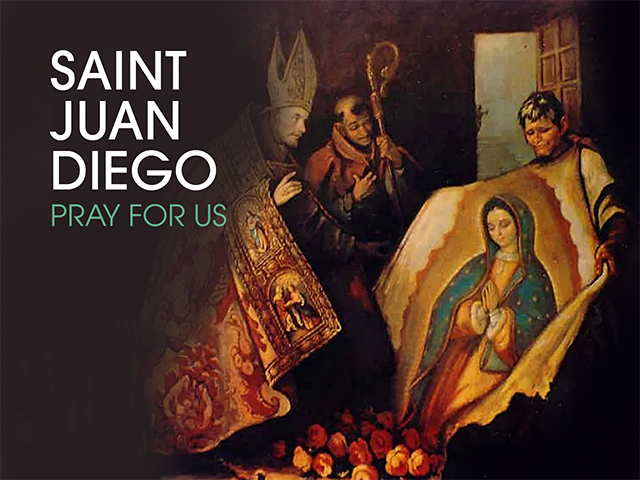



St. Juan Diego (1474–1548) was a poor and humble peasant of the lowest class of Aztec Indians living in what is today Mexico. His native name was Cuauhtlatoatzin, meaning, "eagle that talks." He was baptized at the age of fifty by a Franciscan missionary priest and received the Christian name of Juan Diego. It was he to whom Our Lady appeared as a pregnant Aztec princess on December 9, 1531—at that time the feast of the Immaculate Conception—on the hill of Tepeyac, in present-day Mexico City, as he was on his way to Mass. To help Juan Diego prove to the bishop that she had truly appeared, the Virgin Mary miraculously left her image on his tilma. This image is now famously known as Our Lady of Guadalupe. St. Juan Diego's tilma still bears the image of Our Lady (miraculously, as the plant fibers normally disintegrate in 15-20 years) and it hangs in one of the most famous Catholic pilgrimage sites of the world, the Basilica of Our Lady of Guadalupe in Mexico City. Juan Diego was canonized in 2002 by Pope St. John Paul II as the first indigenous saint from the Americas. His feast day is December 9th.